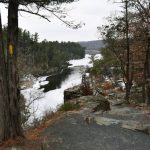Removing habitat protections from Endangered Species Act would imperil Wisconsin’s endangered wildlife
The rusty-patched bumble bee, whooping crane, karner blue butterfly—these some of are the rare Wisconsin wildlife species that rely on protection from the Endangered Species Act to survive. Now, a push from the Trump Administration to allow the destruction of endangered species’ habitat would leave no path to recovery for wildlife across the state and country.
The Endangered Species Act prohibits actions that “harass, harm, pursue, hunt, shoot, wound, kill, trap, capture, or collect” endangered plants and animals. But last week, the U.S. Fish and Wildlife Service and National Marine Fisheries Service said in a proposed rule that degrading or destroying habitat should not be considered harm.
“Habitat protection and restoration is what allowed native species like the Kirtland’s warbler to finally move off of the federally Endangered Species list,” Mathewson points out. The Wisconsin songbird hit population lows of just a few hundred in the 1980s and was one of the first songbirds placed on the Endangered Species list. Populations began to rebound after years of intensive work to safeguard its habitat.
“The removal of habitat protections would undercut much of the progress we’ve made since the Endangered Species Act became law in 1973. It may remain on the books, but its ability to truly protect America’s biodiversity would be substantially diminished,” says Matthewson.
NOTE: This press release was submitted to Urban Milwaukee and was not written by an Urban Milwaukee writer. While it is believed to be reliable, Urban Milwaukee does not guarantee its accuracy or completeness.
Mentioned in This Press Release
Recent Press Releases by Clean Wisconsin
New State Rule Will Help Wisconsin Renters Access Solar
Dec 1st, 2025 by Clean WisconsinRevised rule among the first to take effect after Evers v. Marklein Supreme Court decision
More than a thousand people sign petition to pause AI data center approvals in Wisconsin
Nov 25th, 2025 by Clean WisconsinPetition calls for a comprehensive state plan to ensure AI data center development will not harm communities





















